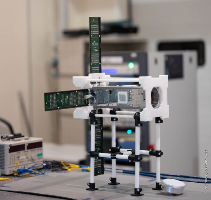| Spacecraft | NESS (N3SS) |
|---|---|
| Form factor | CubeSat |
| Units or mass | 3U |
| Mass in kg | 4.8 kg |
| Entity name | CNES |
| Institution | Space agency |
| Entity | Government (Civil / Military) |
| Country | France |
| Manufacturer | AIVT by U-Space |
| Operator | CNES |
| Oneliner | |
| Description | |
| Results | |
| Sources | [1] [2] [3] [4] [5] |
| Photo sources | [1] [2] |
Related Spacecraft
| Spacecraft | Status | Rocket | Launch | Orbit |
|---|---|---|---|---|
| NESS (N3SS, Nanosat 3U for civil spectrum monitoring) | Operational (Offical news from CNES in October 2023. SmallSat 2024 paper.) | Vega C, (VV23) | 2023-10-09 | 570 km, 97.67 deg |
| NESS+ 2 (N3SS, Nanosat 3U for civil spectrum monitoring) | not launched | not launched | 2027-12-30 | not launched |
| NESS+ 3 (N3SS, Nanosat 3U for civil spectrum monitoring) | not launched | not launched | 2027-12-30 | not launched |
Last modified: 2025-04-11


